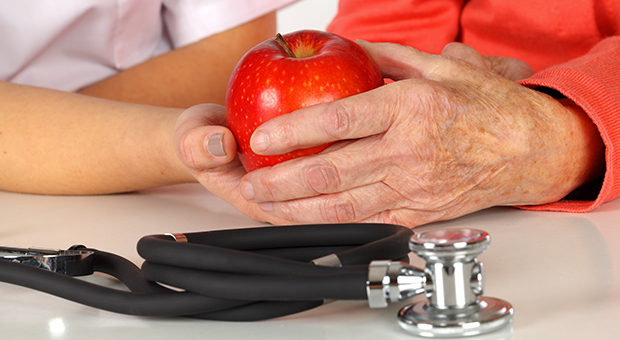The Medical Minute: Keys to building and maintaining bone strength

Osteoporosis is on the rise as 75 million Baby Boomers approach their golden years. Yet many patients and physicians are not aware of what they can do to prevent, slow down and treat the condition, which happens when holes develop in bone, creating a risk of fractures from falls.
Dr. Christopher Sciamanna, chief of the Division of Population Health, Research and Development at Penn State Health Milton S. Hershey Medical Center, likens bone density and strength to a bank account. From birth to about age 25 or 30, you make “deposits” by exercising and getting appropriate amounts of calcium and Vitamin D in your diet.
Once you reach peak bone mass – which differs for everyone, depending on how many “deposits” you have made – your body begins to lose bone mass each year. Some of the loss is due to the natural aging process, while some can be attributed to a lack of use.
“When your muscles pull against a bone, it responds by getting stronger,” Sciamanna said. “That's why bones are strengthened largely by high-impact activities that include pounding and force such as jumping jacks.”
Although men can get osteoporosis, they typically don't develop it until much later in life. “Maybe it's because they have more muscle mass that pulls on bone. Or maybe it's just because they don't live as long,” Sciamanna said. Either way, more than 80 percent of those who are diagnosed with osteoporosis are women.
Once women go through menopause, bone density loss accelerates. “Estrogen is a protective factor for bone, so once you lose estrogen production, you have rapid bone loss for about 10 years until it slows back down to age-related loss,” said Dr. Edward Fox, an orthopedic surgeon at the Medical Center.
That's why the over 50 crowd – especially post-menopausal women – is encouraged to increase their calcium intake to about 1,200 mg per day and 800 units of Vitamin D. DEXA (dual X-ray absorptiometry) scans are often recommended for women past age 50 and men older than 70 to measure bone density.
Once someone is diagnosed with osteoporosis – generally by scoring 2.5 or less on a DEXA scan – doctors can use a variety of medicines to stabilize bone density and even improve it. “None of the drugs we have currently will restore your bone density to what it was, though,” Fox said. “We don't have that technology yet.”
While regulating calcium and Vitamin D intake and continuing regular exercise can slow down bone loss, it can't be stopped without medication.
Fox said some patients with osteoporosis forgo treatment for fear of experiencing side effects that can be caused by the medications. Yet those older than 50 who have a hip fracture face mortality rates of up to 25 percent in the first year.
“If you have a fracture, it's not something we can simply fix and you live the rest of your life happily ever after. There are high stakes,” Fox said. “In the first three years of taking medication, you can decrease your risk of a fracture from a fall by up to 50 percent, so I think the benefits hugely outweigh the risk of side effects.”
Related stories:
- The Medical Minute: Maintaining strength is key to older adults functioning independently
- Strength training helps older adults live longer
- Automated system could identify high-risk osteoporosis patients
The Medical Minute is a weekly health news feature produced by Penn State Health Milton S. Hershey Medical Center. Articles feature the expertise of faculty physicians and staff, and are designed to offer timely, relevant health information of interest to a broad audience.
If you're having trouble accessing this content, or would like it in another format, please email Penn State Health Marketing & Communications.
